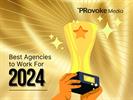Paul Holmes 05 Jul 2001 // 11:00PM GMT
After closing its doors for three years to conduct extensive restoration and renovation, the Hillwood Museum and Gardens reopened to the public on September 14, 2000.
As the former residence of Marjorie Merriweather Post, native Washingtonians remembered Hillwood as a “party house for the rich and famous”. Many connected the Hillwood name with the elaborate garden parties Mrs. Post held and with Mrs. Post’s recognized social prominence instead of perceiving Hillwood as an entity of its own--a culturally and historically significant museum. For Washington newcomers, it seemed that most had little or no knowledge of this rich treasure that lies right in their backyards. Powell Tate’s goal was to raise public awareness of Hillwood so that the museum would be recognized not only as the former residence of Marjorie Merriweather Post, but as a museum that houses the most extensive collection of Russian Imperial art outside of that country; we wanted to position Hillwood as a museum as culturally significant as those on the National Mall.
As part of a larger national campaign, Powell Tate saw it was crucial to build a strong reputation among those in Washington before reaching out to a national audience. While the ultimate goal of the public relations strategy was to generate extensive national and regional coverage surrounding the reopening of the museum, equally important was generating ongoing community interest in the museum that would increase visits not just at the reopening, but throughout the years to come.
STRATEGY
Examining the Washington DC community and social atmosphere, Powell Tate identified four crucial target audiences where it was vital to raise Hillwood’s profile and distinction. If a national audience was going to recognize Hillwood as a premier museum collection as notable as the Frick Collection in New York or the Barnes Collection in Philadelphia, Hillwood must first be recognized at home in this way. These targets audiences were: the political community as the driving force in Washington; the diplomatic community as a resource of international visitors; native Washingtonians who connected Hillwood with Mrs. Post’s social prominence more than with its value as a collection; and newcomers to the area not yet aware of Hillwood as one of the finest local museums in Washington.
Retained to promote press and publicity surrounding the re-opening events, and the final gala evening, Powell Tate used the reopening celebrations to reach out to each target audience in a slightly different way and make each event work for Hillwood as a foundation for a strong national reputation.
Political Community: Powell Tate wanted to make the Hillwood name recognizable to the political community in their work lives and in their private lives. Because of this, we approached this group from two different angles: the members themselves and their families.
While it was impossible to invite each member of Congress to Hillwood for each event, Powell Tate wanted to attract the attention of political insiders. To achieve this we researched the house committees involved in the arts community. We contacted both the Congressional Member Organization of the Arts and the Congressional Arts Caucus obtaining lists of active members in both organizations. In this way, we identified key members of the political community who are active in the arts to be included in the Hillwood reopening celebration events.
Additionally, Powell Tate contacted the Senate Spouses Committee to arrange a special private tour for the committee. Organized in September, when the members and their families returned from summer recess, this was part of the spouses’ “welcome back” meeting activities. Our goal was to familiarize this group with Hillwood as a cultural destination, raise its profile within political circles, and relay their experience to constituents at home.
Diplomatic Community: To involve the diplomatic community in Hillwood’s reopening activities, Powell Tate contacted all of the foreign embassies in the DC area and developed a list of the cultural attachés to each embassy. These members of the diplomatic community were then invited to a diplomatic evening, before the museum’s reopening, to familiarize each embassy with Hillwood as a cultural destination in Washington. In an effort to encourage the foreign press to cover Hillwood as a travel destination, Powell Tate also reached out to the DC bureaus of all foreign press to include them in a press preview event. On the evening of the re-opening Gala, Powell Tate selected specific media to cover the evening--among them several members of the Washington Diplomat who wrote a feature article for their cultural section.
Washingtonians: For those living in the Washington DC area during the time that Mrs. Post resided at Hillwood and held her famous garden parties, Hillwood held a strong connection to DC society. When thinking of Hillwood’s significance, people thought of the famous names associated with Mrs. Post instead of the famous collection housed within. Powell Tate saw this name recognition as an opportunity to use the reopening gala event as a reminder of the past parties of Hillwood while repositioning the collection itself as the centerpiece of this celebration. Powell Tate worked with local publications such as The Georgetowner and Washington Life to craft feature stories that emphasized this new focal point.
Broader Local Audience: To address a broader local audience, those less familiar with the Hillwood name, Powell Tate reached out through various media outlets. We brought select local television affiliate anchors and camera crews through the museum before its reopening to tour the collection with museum curators and produce packages that aired on the local news just before Hillwood reopened its doors to the public. At the private gala reception, Powell Tate hosted press and photographers from publications such as The Washington Post, The Washington Times, Time, W, Financial Times, US News & World Report, The Hill, The Washington Informer, Washington Life, The Wall Street Journal, and local radio and television.
RESULTS
As a result of this community and local media outreach, Powell Tate successfully repositioned Hillwood as a name recognized and praised throughout the Washington DC area for its valued collection and laid a solid foundation for a larger national campaign.
Established an ongoing relationship between Hillwood and the Senate Spouses Committee where groups will continue to visit Hillwood twice a year, bringing new members of the committee to Hillwood as a part of their orientation welcome program.
Resulted in feature stories in The Washington Post, The Washington Times, The Washington Diplomat, The Washington Informer, The Georgetowner, the “Top Pick” for museums in US News & World Report, and live coverage of the gala event by local affiliates.
Raised overall awareness of Hillwood and its collection in all target groups.


































.jpg)

















